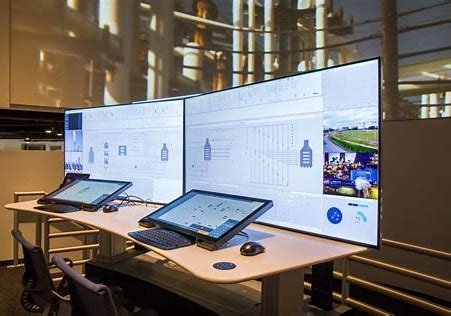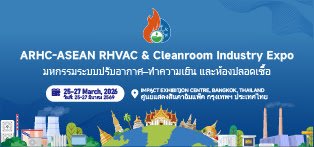TÜV Rheinland and Eyesafe Announce the Release of Eyesafe(R) Display Requirements 2.0
20 May 2022 | Friday | News

Image Source : Public Domain
TUV Rheinland Group (TUV Rheinland), a global leader in third-party testing and certification, and Eyesafe, a leader in blue light management and display solutions, today announced the release of the Eyesafe® Display Requirements 2.0. The partners introduced the Eyesafe® Display Requirements 1.0 in 2019, establishing an industry benchmark for low blue light emissions. Global PC companies and suppliers including Dell, HP, Lenovo, Acer, GIGABYTE, BenQ, LG Display, BOE and others have since adopted the requirements for a broad array of products from OLED TVs to high performance laptops and monitors.
The decision to develop and release the new Eyesafe® Display Requirements 2.0 is based on advancements in research – specifically, a more complete understanding of the potential risks associated with exposure to blue light. The Eyesafe® Display Requirements 2.0 simplify the existing requirements and focuses on Blue Light Toxicity Factor (BLTF) as the primary metric of blue light risk, utilizing a more complete portion of the blue light hazard region on the spectrum of visible light. The Eyesafe® Display Requirements 2.0 are available here.
The Eyesafe® Display Requirements 2.0 establish a limit of 0.085 for BLTF and address the industry's need for accurate color quality. The new requirements are detailed in the accompanying white paper titled "Defining Blue Light Requirements for Digital Displays." The new requirements reflect the input of world-renowned optometrists and ophthalmologists. TUV Rheinland will begin offering the Eyesafe® Display Requirements 2.0 Certification in May 2022.
Along with the simplified requirements, TUV Rheinland and Eyesafe are introducing the concept of Radiance Protection Factor for Display (RPF®). The introduction of RPF® will translate BLTF into a numerical scale from 0-100, making Eyesafe® Display Requirements easy to understand for consumers. Consumer electronics companies will be able to utilize RPF® as a mechanism to help consumers identify and compare the blue light protection of a given device. The chart here illustrates how RPF® for Display works.
"With screen time up significantly since the onset of COVID-19, the Eyesafe® Display Standards are more important than ever for the global population," said Dr. David Friess, chair of the Eyesafe Vision Health Advisory Board, which played a key role in defining the Eyesafe® Display Requirements 2.0. "The update simplifies and focuses the requirements against the area of most concern in regard to high-energy blue light and provides a simple metric with RPF® to help consumers understand reduction levels."
"The introduction of Radiance Protection Factor, or RPF®, as the new key performance metric that can be used to compare levels of blue light protection among different display options, removes the guesswork from consumers who have seen a massive proliferation and demand for low blue light devices in the marketplace in the past two years," added Dr. Dagny Zhu, a member of the Eyesafe Vision Health Advisory Board.
"TUV Rheinland and Eyesafe have been leaders in defining a set of requirements for blue light management. The announcement of the Eyesafe® Display Requirements 2.0 comes at a critical juncture for the global display industry," remarked Frank Holzmann, Global Vice President of TUV Rheinland Business Field Electrical. "As more and more brands offer low blue light display options, it's imperative that independent certification bodies like TUV Rheinland offer more trustworthy and reliable information to consumers. With that goal in mind, we believe the new RPF® scale empowers brands and consumers to understand the level of blue light reduction in a simplified way. TUV Rheinland has always been on the forefront of establishing benchmarks for the industry."
"When we introduced the original Eyesafe® Display Requirements in 2019, the industry was just beginning to offer low blue light devices to consumers," remarked Justin Barrett, the CEO and co-founder of Eyesafe. "Now that we are seeing broad-based adoption of low blue light as a necessary and standard feature in displays, it's important that we continue our leadership role in pushing the industry forward by introducing the Eyesafe® Display Requirements 2.0. This will set the benchmark for the next generation of displays."
"We believe RPF® will make it easy for consumers to quickly differentiate among competing devices that offer 'low blue light,'" added Barrett. "The RPF® scale puts the power of choice back in the hands of the consumer by enabling them to make the best decision for themselves, their employees, or their loved ones by knowing precisely how much blue light is emitted from the device."
To learn more about the TUV Rheinland Eyesafe® Certification program, contact TUV Rheinland representative.
Most Read
- How Health Systems Are Reshaping Drug Adoption, Partner Models, and Market Access in 2026
- Top 25 Biotech Innovations Redefining Health And Planet In 2025
- The New AI Gold Rush: Western Pharma’s Billion-Dollar Bet on Chinese Biotech
- Top 25 Biotech & Biopharma Leaders in Sustainable Innovation, 2025
- China’s Biopharma Dealmaking Surges in H1 2025, Driven by Record Licensing and Oncology Focus
- Chikungunya in China: How a “Forgotten” Arbovirus Found the Perfect Storm
- How Innovation Gaps in Biopharma Raise New Safety Concerns
- Smart Implants and the Future of Musculoskeletal Injury Treatment
- How Ethical Gaps in Psychiatry Could Undermine Biopharma Progress
- The Evolving Landscape of Women’s Health Innovation in the Asia-Pacific
- Using NLP-Driven Decision Support in Emergency Health Assistance
- Taiwan Steps Into the Global Spotlight With a New Cancer Therapy
- The Role of Unique Device Identification (UDI) in Tracing Medical Device Safety
- The Importance of a Patient’s Mental Health During Clinical Trials
Bio Jobs
- The State of Biotech and Life Science Jobs in Asia Pacific – 2025
- Avantor’s New CEO Ligner Aims to Unlock Global Potential and Deliver Shareholder Value
- AstraZeneca Commits $50 Billion to U.S. Expansion by 2030 in Biggest-Ever Global Investment
- Thermo Fisher, SAMRC, and South Africa’s Department of Science and Innovation Launch CATIR to Nurture Next-Gen Scientists
- Cube Biotech Appoints Former Sartorius CEO Dr. Joachim Kreuzburg to Board of Directors
- FDA’s AI Transition Marks a Turning Point in Drug Review: Industry Faces Pressure to Adapt Amid 20% Workforce Cut
- WuXi XDC Completes Mechanical Build of Singapore Bioconjugate Manufacturing Hub
News
Editor Picks











